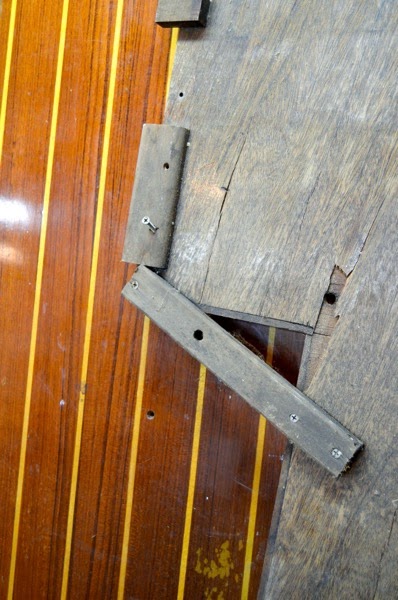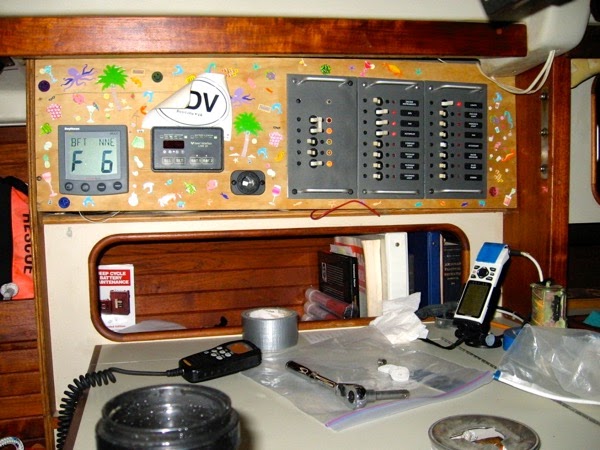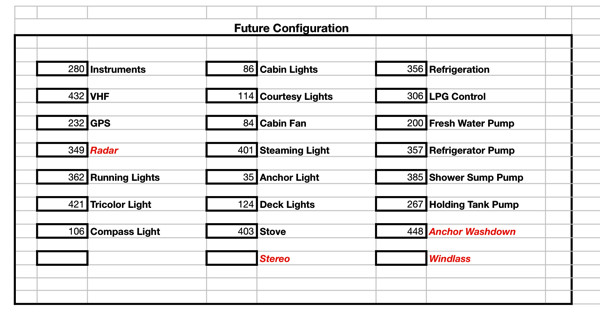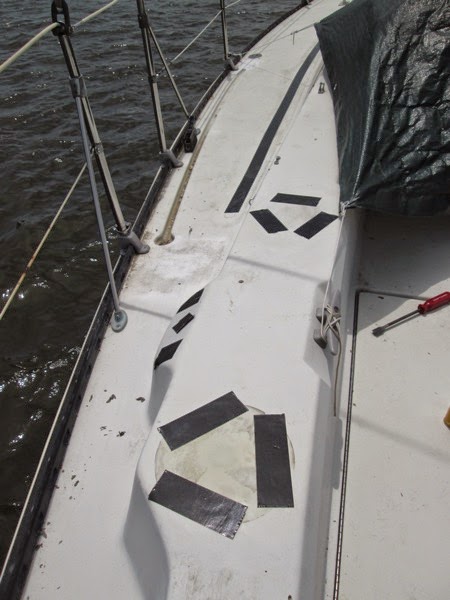About 13 years ago I replaced the entire cabin sole. As the boat was a bank repo, the original cabin sole was delaminating, worn out and in one place directly in front of the companionway steps, completely broken through. Since we had other priorities for the first couple of years, we screwed down a section of cheap plywood to keep folks from breaking their ankles and essentially ignored the condition of the rest of the flooring.
When we threw out all the original cushions and decided to have new ones made. The new cushions set against peeling plywood laminate was not going to impress folks. Or us.
We bought 15 yards of close-out Ultrasuede from close friends in the fabric business for an absurdly low price, contracted with a local boating canvas guru and had all new cushions made. From there it was on to replace the cabin sole.
I purchased two sheets of 18mm (~3/4”) x 4’ x 8’ teak-and-holly plywood and arranged to use the basement of a fellow racer and good friend since my condo rules probably weren’t going to allow me to stink up the place with varnish and epoxy fumes. I pulled the original flooring as templates and after sanding, epoxying, varnishing, cutting, routing and 1/4” x 3/4” teak edging that I had ripped, the flooring went in. It looked magnificent.
But. There were built in problems from the beginning. These issues finally reared their head after about 10 years of use.
When I didn’t do was, despite completely coating all the surfaces and edges with several coats of epoxy, was get ALL of the edges sealed. The reason for this is that I not so cleverly finished both sheets of plywood before making the cutouts. So, during the install phase, and when another good buddy who had done boat cabinetry gave me a hand, we just routed out out the shape and nailed the teak edging in place.
So, over the years and a few incidents of high water and just plain moisture in the bilge, the replacement cabin sole started to give up.
Replacement flooring gone bad:
The weather has turned unseasonably cold so there is no more work to be done on the hull and decks. I purchased another two sheets of teak-and-holly plywood, which interestingly cost me less this time and brought them to my new shed. At least I won’t have to bother my old friend again. Especially given that he has stopped boating and gave me all his boat building supplies, of which there is a really nice vacuum pump along with all the sheeting and System Three epoxy that I could ever use. A good friend indeed.
So far, all that has been done is to layout the new and old plywood to make sure that things will line up and that the cuts will be correct. Pretty expense mistake if I get it wrong.
New and old plywood in the shed:
Protecting the surface of the new plywood:
Removing supports and screws:

Checking alignment:
Getting ready to trace the template outlines:
That’s all the work that I did for the afternoon. In the next couple of days I expect to start cutting and routing. With the exception of West System epoxy, I don’t have any finishing product yet but I’m looking seriously at the new AwlBrite product in a semi-gloss. The original flooring was finished in many coats of gloss varnish and I’m not inclined to go that route again.










